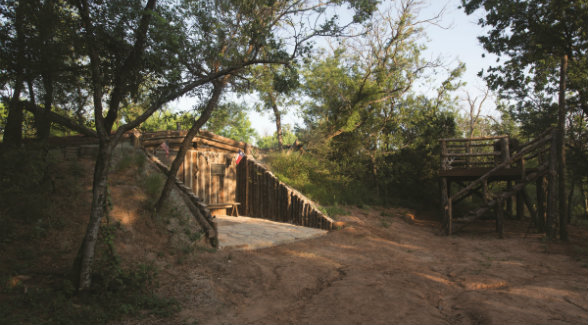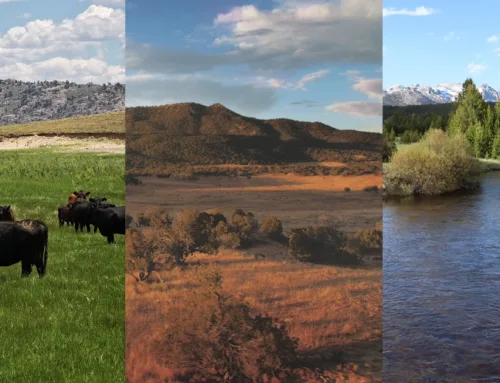The Antler Creek Dugout
The Antler Creek Dugout
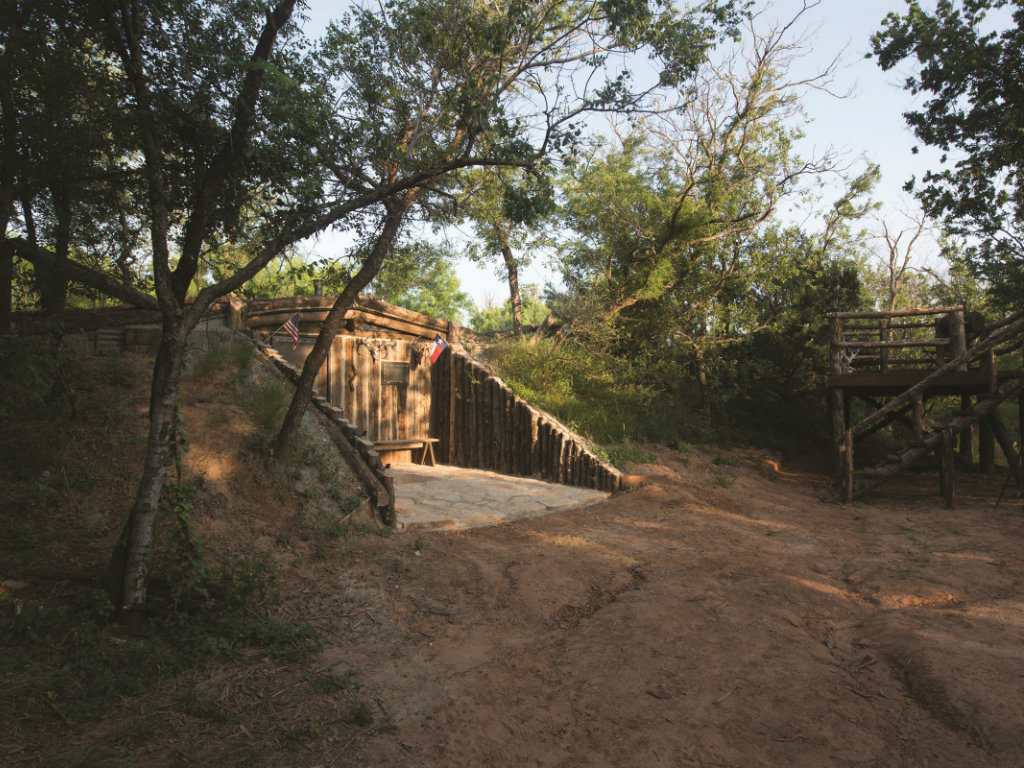
Dugout_fi
It took Rick and Wyman Meinzer six months to craft this tribute to hardy landowners of yore: a bombproof dugout built to rival any ever constructed on the Great Plains.
Photography By Wyman Meinzer
During his undergraduate days at Texas Tech, Wyman did extensive research on the Pitchfork Ranch and befriended Ranch Manager Jim Humphreys and the Pitchfork’s second-in-command, Bob Moorehouse. They told him about an ancient half-dugout tucked away in a far corner of the great ranch. Best suited for a bachelor, it was called “the Batch Camp.” For the next three winters, the Batch Camp served as the college graduate’s home while he trapped and hunted on some 300,000 acres of the wildest, most remote rangeland in the U.S.
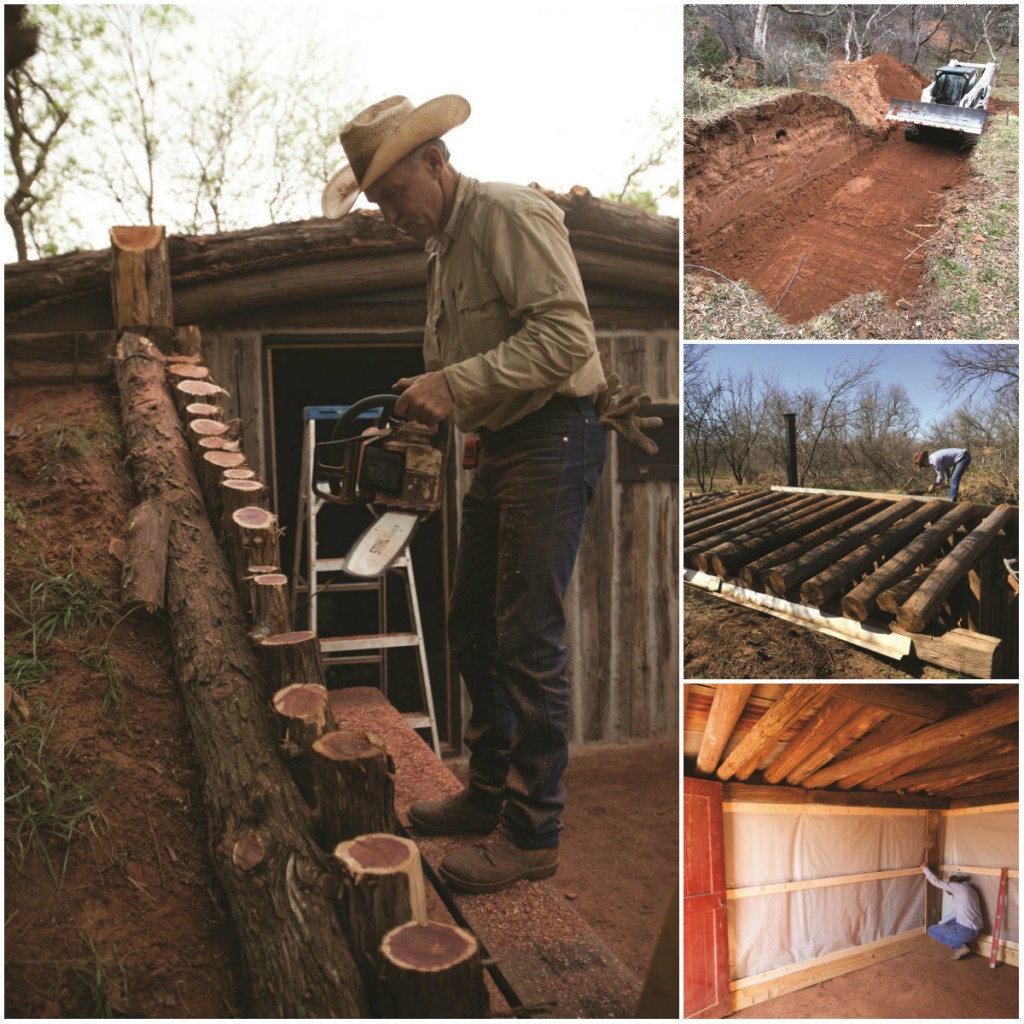
Forty years on, Wyman still returns to Batch Camp to make repairs and do general upkeep. As with so many experiences in his life, he absorbed lessons that he would subsequently interpret and apply. The legacy of the Batch Camp would be realized with the Antler Creek Dugout which Wyman built with his brother, Rick, in 2015.
This past February, Rick realized he had found a perfect spot for a traditional dugout – the iconic structure of the frontier prairie — in a bank cut thousands of years ago by the shifting Brazos River. Wyman had recently unearthed some petrified whitetail antlers nearby, so they named the site the Antler Creek Dugout.
Using a Bobcat loader, Rick dug a 12 x 14 foot trench in an east-facing slope. It was 7 feet deep. Several days were then spent squaring the trench by hand with a shovel and pickaxe. The two fretted about wall and ceiling integrity.
“Two tons of earth falling in on you, and it’s over,” Wyman says.
They bolstered the walls with railroad timbers fitted into slots that they dug by hand into the walls. For roof support, six timbers were laid horizontally and secured to the vertical supports by driving in sharpened 10-inch x ½-inch steel rods. Twelve railroad timbers formed the front wall. Heavy 12-foot cedar poles formed the tops of the walls and served as a base for the ridgepole. All junctions were secured with 10-inch steel rods. Four 14-foot poles and a 16-foot ridgepole completed the framing. A couple dozen 6-foot poles formed the rafters. A custom stovepipe was welded into a 2 x 2 foot base and attached to the rafters with lag screws.
Two layers of metal and two layers of black felt topped with four inches of evenly distributed topsoil formed the base layer of roof — after a mere two days of shoveling. A layer of oil field plastic and a four-inch layer of local clay formed the water barrier. A board-and-batten interior — the boards were taken from an old smokehouse — over a plastic barrier, caulked to keep out critters, formed a snug interior. More shovel and pick work leveled the floor. Bricks and mortar formed a base for a wood stove. An old door from the JY Ranch, a gift from a rancher named Mike Gibson, was put to good use. A framed window and wooden shutter serve as a shooting port in the event of a raccoon raid. A stone floor would make the old-time line camp men roll with envy in their graves.
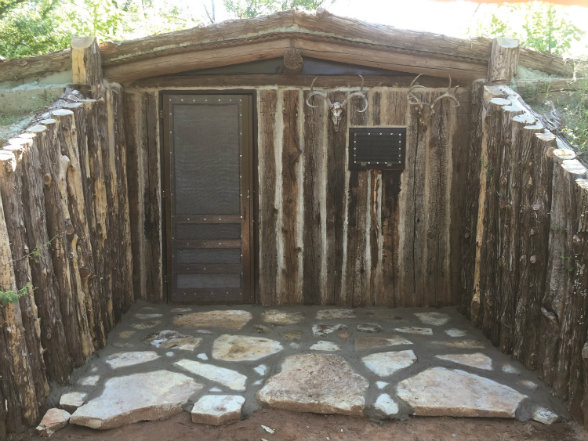
Why all the effort?
Wyman says, “We want to leave a tangible legacy to our children and grandchildren and those beyond. We built it strong and durable so that people long after us can get a glimpse of a way of life that was the foundation of America.


